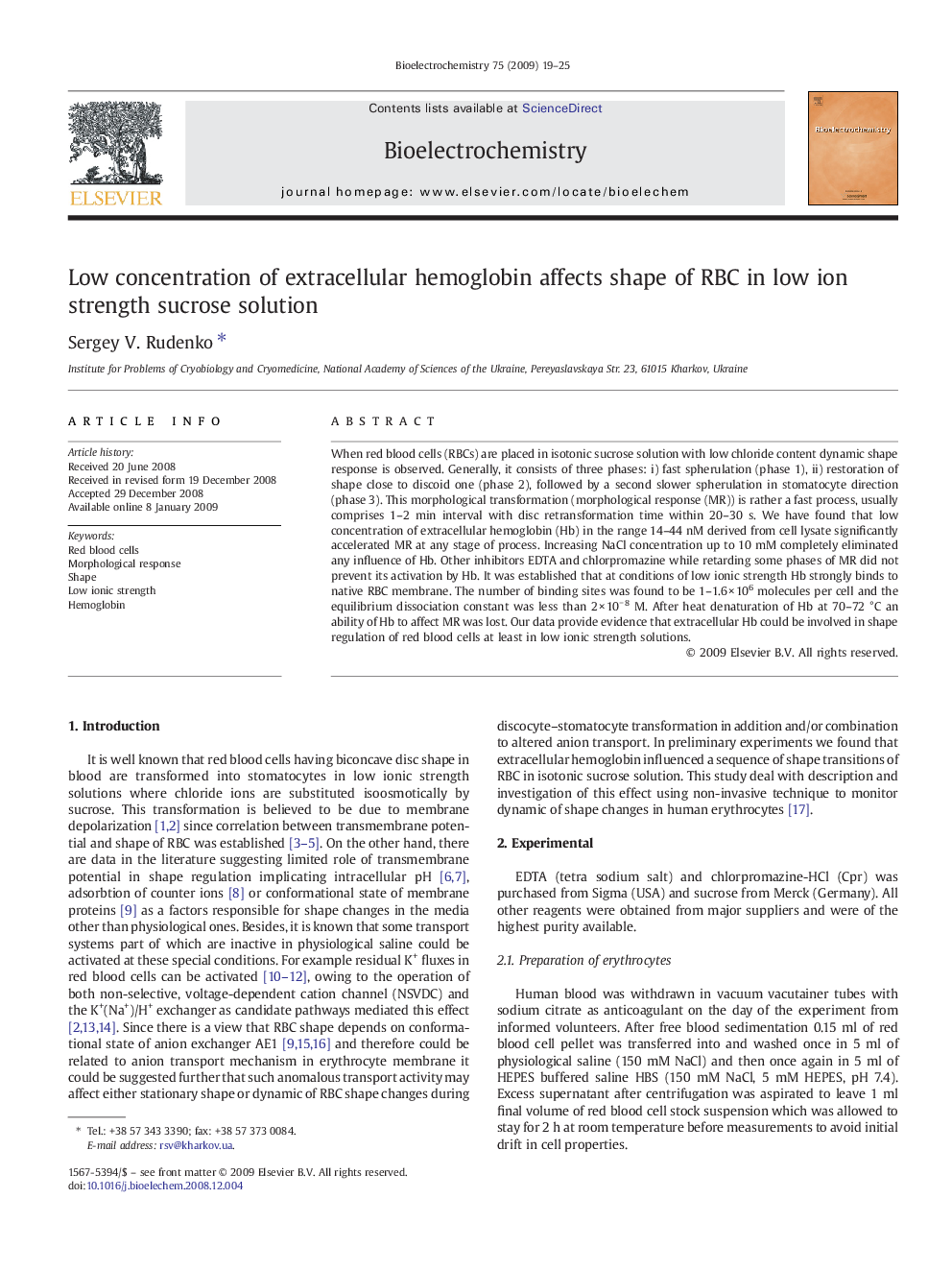| Article ID | Journal | Published Year | Pages | File Type |
|---|---|---|---|---|
| 1268890 | Bioelectrochemistry | 2009 | 7 Pages |
When red blood cells (RBCs) are placed in isotonic sucrose solution with low chloride content dynamic shape response is observed. Generally, it consists of three phases: i) fast spherulation (phase 1), ii) restoration of shape close to discoid one (phase 2), followed by a second slower spherulation in stomatocyte direction (phase 3). This morphological transformation (morphological response (MR)) is rather a fast process, usually comprises 1–2 min interval with disc retransformation time within 20–30 s. We have found that low concentration of extracellular hemoglobin (Hb) in the range 14–44 nM derived from cell lysate significantly accelerated MR at any stage of process. Increasing NaCl concentration up to 10 mM completely eliminated any influence of Hb. Other inhibitors EDTA and chlorpromazine while retarding some phases of MR did not prevent its activation by Hb. It was established that at conditions of low ionic strength Hb strongly binds to native RBC membrane. The number of binding sites was found to be 1–1.6 × 106 molecules per cell and the equilibrium dissociation constant was less than 2 × 10− 8 M. After heat denaturation of Hb at 70–72 °C an ability of Hb to affect MR was lost. Our data provide evidence that extracellular Hb could be involved in shape regulation of red blood cells at least in low ionic strength solutions.
